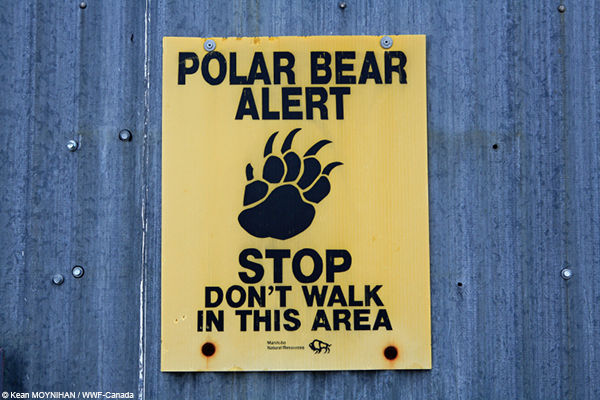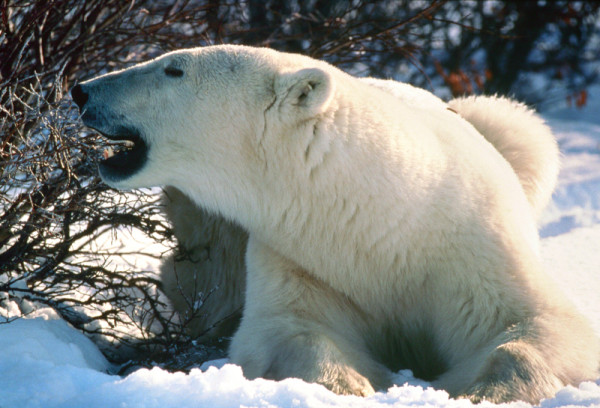Keeping people (and polar bears) safe as ice shrinks
Originally published on WWF’s Cool Planet Blog.
A fully grown polar bear is not a visitor you’d want to entertain. Adult males can be two-and-half meters long, and weigh more than 700 kilograms. When they’re on land, they’re likely to be hungry, missing their high-fat seal diet.
In some parts of the Arctic, the bears are increasingly on land due to sea ice forming later and melting earlier, and that’s a big concern for the people who share the Arctic coast.
Joe Savikataaq Jr. from the Canadian community of Arviat knows the problem well. His community on the Hudson Bay coast is situated on a point of land that’s like a highway for the bears stuck on shore. The bears threaten people, rip up property, and steal food.
Until recently, the only certain way for people to remove those threats was to shoot the bears. Now there are different ways of keeping people and bears from coming into conflict, ranging from using electric fences and bear-proof food bins to “hazing” the bears, driving them off with deterrents such as guns that fire bean-bags.
Joe was recently part of a training course part-funded by WWF to train local people to use deterrents, and become polar bear guards. “I’d like to thank WWF for putting on the course, I know it’s a lot of work doing this kind of stuff. I appreciate what everybody’s doing to make people safer and decrease the number of bears shot in defence.”
Now the manual for the training course exists, WWF is planning to help adapt it for other communities around the Arctic. This will supplement support WWF has given to help establish polar bear patrols in Russia and Alaska, as well as Canada, and a circumpolar workshop on reducing human-bear conflict.
Despite the short-term growth of sea ice in the past couple of years, the longer term trend (the only one that is significant) is still for shrinking ice. This will leave more bears on shore for longer periods for the foreseeable future.
It’s a future for which we are trying to prepare, so that both people and bears can weather what the future climate brings.



